As we return from our mini-break, we bring you some highlights of stories that happened while we were away, including black holes spiraling toward each other, the possible origin of a fast radio burst, and more information on the demise of the dinosaurs. Plus, Erik Madaus brings us updates on quite a few rocket launches.
Podcast
Show Notes
Found: Two supermassive blackholes readying to merge
- Caltech press release
- NASA JPL press release
- “The Unanticipated Phenomenology of the Blazar PKS 2131–021: A Unique Supermassive Black Hole Binary Candidate,” S. O’Neill et al., 2022 February 23, The Astrophysical Journal Letters
Found: A misaligned stellar black hole
- University of Freiburg press release
- “Black hole spin–orbit misalignment in the x-ray binary MAXI J1820+070,” Juri Poutanen et al., 2022 February 24, Science
Found: Young Magnetar in Old Star Cluster (maybe)
- A fast radio burst’s unlikely source may be a cluster of old stars (Science News)
- “A repeating fast radio burst source in a globular cluster,” F. Kirsten et al., 2022 February 23, Nature
Springtime for Chicxulub
- The Age of Dinosaurs may have ended in springtime (Science News)
- “The Mesozoic terminated in boreal spring,” Melanie A. D. During et a., 2022 February 23, Nature
Paleoseismology changes the San Andreas game
- Columbia Climate School press release
- “History of earthquakes along the creeping section of the San Andreas fault, California, USA,” Genevieve L. Coffey et al., 2022 February 25, Geology
Rocket News from Break
- Overview for Northrop Grumman’s 17th Commercial Resupply Mission (NASA)
- Northrop Grumman’s 17th Resupply Mission Carries Science Experiments, Technology Demonstrations to Space Station (NASA)
- Space Demonstration for All Solid-State Li Ion Battery (NASA)
- Advanced Hydrogen Sensor Technology Demonstration (NASA)
- Starlink mission page (SpaceX via Archive Today)
- CASC press release (Chinese)
- CASC press release (Chinese)
- NASA Awards SpaceX Additional Crew Flights to Space Station (NASA)
- SpaceX heeds Ukraine’s Starlink SOS (Space News)
Transcript
A lot happened while we were on a break last week. Much of it was Not Good, and we’re still getting a handle on the world news. However, science also still happened, and there were quite a few space-related press releases and news articles in our inboxes.
Before we get to the news, I want to reiterate something I said in our newsletter: The production team and community behind CosmoQuest is international. We are proud to live in a world where so many people of so many backgrounds can stand up and demand peace. From the school teachers taking up arms in Kyiv to the protestors being arrested in St Petersberg, to the endless thousands standing before the Brandenberg Gate to say never again, the cry for peace rings loud and is being fought for. It only takes one man to start a war. Sadly, it takes far more people to end it. What I do know is CosmoQuest stands against wars and conquest.
The exploration of space is a multi-national affair, as it should be. Space is too vast and the costs of exploration too high for any one nation to try and do everything alone. Unfortunately, when a nation chooses to send cruise missiles at residential buildings, the rest of the world needs to pick up their toys and just go home.
We are recording this episode on March 1, and this Friday, we’ll be recording a special episode on how sanctions and other actions are affecting space science. If you are watching this episode after March 5, please look for that episode on our YouTube.
For now, we are going to bring you science, right here on the Daily Space.
I am your host Dr. Pamela Gay.
And I am your host Beth Johnson.
And we’re here to put science in your brain.
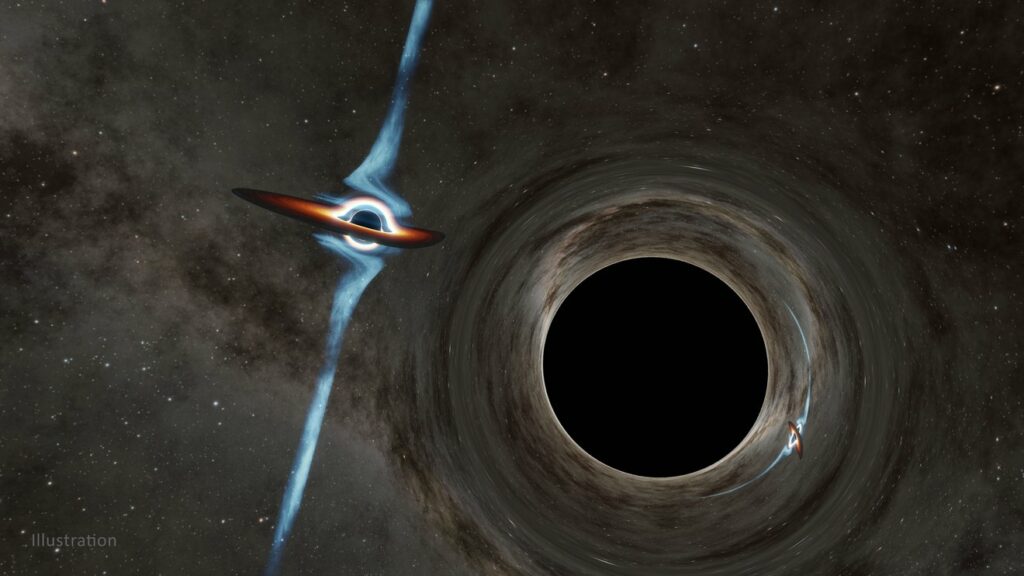
One of the first questions you should always ask about science studies is “what is your sample size?” When talking about new drugs, expect numbers initially in the tens and then the hundreds. When dealing with computer models you may get thousands of simulations. With space science: we get super excited about a pair of pairs of supermassive black holes.
The sky is vast, the universe is deep, and finding examples of rare and interesting objects can be super hard. In discussing the evolution of galaxies, we tell the story of smaller galaxies and their central supermassive black holes coming together and merging, over and over, to build the most massive galaxies and supermassive black holes in the universe.
The only problem is that while we see lots of galaxies merging, finding merging supermassive black holes has been harder, and until now, we only knew of one example – OJ 287 – of two tightly orbiting supermassive black holes. In that system, a 150 million solar mass black hole orbits an 18 billion solar mass black hole every twelve years. While one observation is enough for an astronomer to prove we’re probably right, it is better to have more than one example.
And now, a new system with two supermassive black holes with sizes around 100 million solar masses has been found. Cataloged as PKS 2131-021, the smaller of the two black holes appears to orbit the larger every 760.6 days or just over two years. This much smaller orbit puts these two systems closer together and closer to ultimately merging into a single system. In fact, these two supermassive black holes could merge in just 10,000 years.
Each of these systems gave itself away in different ways. OJ 287 has flares when its smaller supermassive black hole goes through the disk of material around the larger supermassive black hole. In PKS 2131-021, researchers don’t see anything as glaring as flares, but when researchers look at the systems jets, they see a sinusoidal pattern in the galaxy cores brightness in radio light that appears to correspond to a radio get moving back and forth. According to project mentor Tony Readhead: We knew this beautiful sine wave had to be telling us something important about the system,” Readhead says. “Roger’s model shows us that it is simply the orbital motion that does this. Before Roger worked it out, nobody had figured out that a binary with a relativistic jet would have a light curve that looked like this.
The Roger in question is co-author Roger Blandford who worked with lead author Sandra O’Neil on this project. O’Neil started this project as an undergraduate summer intern, pouring through data to find evidence of this object’s consistent variability in data as far back as 1976. With a long period, well-defined oscillation, Roger was able to piece together how the two supermassive black holes are orbiting. This work appears in The Astrophysical Journal Letters. As O’Neil puts it: Our study provides a blueprint for how to search for such blazar binaries in the future.
If we get lucky, maybe we can double our sample and find a whole four binary supermassive black holes out there, merging among the galaxies.
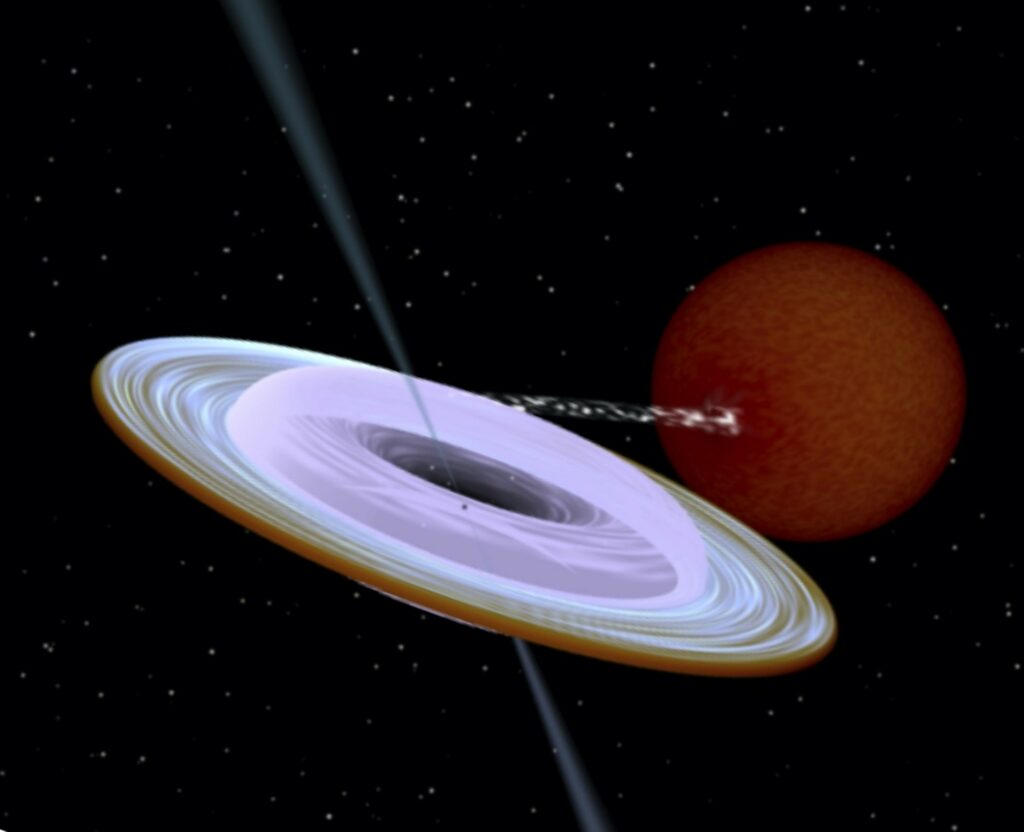
While sometimes we get lucky and find things that match theory, sometimes we also find things that prove our theories are wrong or at least incomplete. Case in point: the binary system MAXI J1820+070. This system contains a regular star and also a black hole that formed from the death of a star. As often happens, the gravitational pull of the black hole is stripping material off its neighbor.
As we didn’t think should happen, the orbits of these two stars and the spin axis of the black hole aren’t lined up. Instead, the black hole appears tilted about 40 degrees. For comparison, Saturn and its ring system are only tilted 27 degrees. The lead author of this paper, Svetlana Berdyugina, puts it this way: The difference of more than 40 degrees between the orbital axis and the spin of the black hole was completely unexpected. … This finding challenges current theoretical models of black hole formation.
This work appears in the journal Science.
The tilt of the black hole is highlighted by jets that appear in X-ray images. The tilt of the incoming material from its companion was measured by looking at how the light scattered off the disk using a technique called polarimetry.
Normally, results like this are just super cool because they tell us the universe isn’t behaving as expected. This discovery is also troubling because the tilts of the system are used to calculate the masses of the objects in the system. If we’ve been assuming the wrong tilt, well, there could be a bunch of black holes out there that we mismeasured.
Science is a process, folks. And sometimes it requires a step sideways and a good sit while we figure out if we can keep going forward on the path we’re on or if we need to go back and try again from a different direction. Or in this case, a different tilt.
The theme of this segment has somehow become “astronomers find dense things”. From supermassive black holes to a stellar-mass black hole, we now turn to what we think is a magnetar – a super-dense, spinning neutron star – that is misplaced in a globular cluster.

Recent observations of a fast radio burst in our galaxy seemed to indicate that these weird, brief bursts of radio light come from magnetars. That part is easy. All the physics makes sense.
The catch is that magnetars are supposed to be really, really young neutron stars – the results of the recent death of a fairly massive star – and this means we should only find magnetars and the fast radio bursts they create in places where big stars are actively dying. This is the same kind of place where smaller stars may still be forming and where, in general, we refer to the stars as young or short-lived.
Globular clusters, like the one this new fast radio burst and likely magnetar are linked to, well, they are places with only the oldest of old stars; places where the white dwarf stars are cooling, the neutron stars are slowing, and magnetars just shouldn’t happen.
And this raises the question: How is it that we are seeing fast radio bursts – repeating fast radio bursts – from a globular cluster? As discussed in a new paper in Nature led by Franz Kirsten, the answer likely involves stellar shenanigans.
It is possible to create stars that act like young stars and die like young stars by merging a couple of old stars into a single more massive star that goes through its own cycle of life and death, creating a new neutron star long after large star death should have ended. It is also possible that a white dwarf ate enough material off of a neighbor that it transformed into a brand new neutron star. According to Kirsten: This is a [magnetar] formation channel that has been predicted, but it’s hard to see. Nobody has actually seen such an event.
This is your regular reminder that the Universe is weird, anything that can happen probably will happen, and on a good day, we get to discover those weird things.
From looking up and out, we’re now going to flip our science downward and look at our own world and some of the things that shake, rattle, and roar.

It’s turning toward spring here in North America, and a few bulbs are doing their best to bud through the mud and snow enjoyed by a lot of our team. Spring: It’s a time for renewal, for birth, and, according to new research appearing in Nature, spring is a time for mass extinction.
Scientists are continuing to learn everything they can about arguably the worst day in Earth’s history – the day the dinosaurs died. And this new science result started off a little strange – that day was in the springtime. No, really. That is the result of this research, which was published last week and led by vertebrate paleontologist Melanie During.
Scientists studying sedimentary rocks and fossils at the amazing Tanis site in southwestern North Dakota analyzed the bones of paddlefish and sturgeons to try and determine what time of year the Chicxulub impact occurred. Today I learned that fishbones, like trees, contain the marks of cyclical evidence for growth patterns. Vigorous growth shows up as thick bands, while slower growth makes for thinner bands, and times of drought or famine show up as a line of arrested growth. Those lines can also designate wintertime food cycles.
And lead author During explained that the fossilized fish in this study turned out to be growing just fine at the time of their demise; however, they had not yet reached the peak of their growth cycle which tends to occur in summer. The lines of arrested growth came at regular intervals, and these fish weren’t in one of those periods based on the banding. The conclusion reached is that the fish all died in the springtime.
So how does this relate back to the Chicxulub impact and the end of the dinosaurs? The fish fossils at the Tanis site are known to have been found with tiny spherules of solidified molten rock stuck in their gills. This means the fish were still alive when the impact’s effects rained fire and molten rock on them, killing them close to the time of the impact.
And now for the why the season is important. We want to understand not just how and why the dinosaurs disappeared from the fossil record but also why smaller mammals and birds and such may have survived. If it was springtime in the Northern Hemisphere, that means many of those small creatures would have been fresh out of hibernation and out seeking food. But in the Southern Hemisphere, it would have been autumn, and the same types of creatures would have been setting up their burrows and hiding underground, possibly even protected from the literal fallout of the impact. That could have given them a better chance for survival.
Obviously, something saved the smaller birds and mammals so that they could evolve into what we have today, which is no dinosaurs. Except for the chickens.
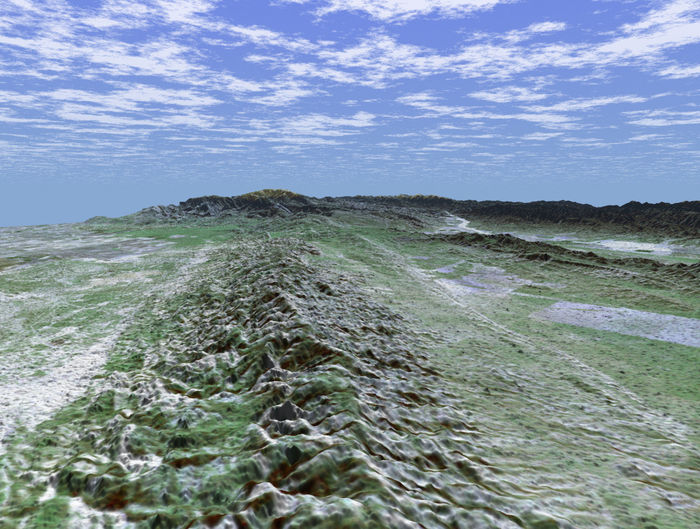
From paleontologists analyzing fish fossils we now turn to paleoseismologists analyzing rock cores. A new study in the journal Geology presents an analysis of rocks drilled from a section of the San Andreas fault here in California showing that the slow creep of the faultline may be more dangerous than previously thought.
The San Andreas faultline is nearly 1300 kilometers long and runs the length of the state of California, from Baja in the south to the Mendocino Triple Junction in the north. It’s the dividing line between the Pacific Plate and the North American Plate, which are rubbing alongside each other as one moves north and the other moves south. It has been the site of several major earthquakes in the past couple of centuries, including the 1906 San Francisco earthquake, the 1989 Loma Prieta quake, and the 1994 Northridge quake. All three of these earthquakes resulted in death and destruction and were the result of a sudden, fast, and extreme slip between the two plates. Basically, they stick for a long time and then suddenly slide and cause a massive quake.
But if you know your California geography, you might have noticed something about the locations of those three quakes – two were in northern California and one was in southern California. So what happens in the middle of the state and the middle of the faultline? Not much. It’s not that quakes don’t happen. It’s that they happen pretty regularly but on a smaller scale. The central section of the San Andreas moves at a nice, steady 26-millimeters per year pace. It’s a process known as aseismic creep, and it has generally been thought to be a safe process than the massive slippages of the northern and southern sections.
In fact, the quakes that do occur in this central section tend to happen at the southern end of it and are only around magnitude 6, which is pretty mild by large earthquake standards. For contrast, the 1906 quake was a 7.9 magnitude, and the most deadly quakes around the ring of fire tend to be even greater than that, with several in excess of magnitude 9, including the Tohoku quake in Japan in 2011.
But just because we think this central section of the San Andreas is safer doesn’t necessarily make that statement true, and scientists always want to be certain of their results. So a team of researchers drilled out samples about three kilometers below the surface to see just how often the rocks had been altered due to the frictional heat of the slipping fault. And they found signs of more than 100 quakes that occurred in that deep section of rock, with the fault slipping about 1.5 meters during one event. That comes out to a 6.9 magnitude quake, which is the same as the 1989 Loma Prieta event and slightly larger than the 1994 Northridge quake. Of course, the method being used to calculate the magnitude is still evolving, so that quake may have been more energetic than the current calculations suggest.
What this research comes down to is to tell us that the central section of the San Andreas, which most scientists have considered relatively quiet and therefore safer than the other sections, could actually be just as dangerous and harbor the same potential for a massive quake. Not very reassuring to that section of my fair state.
But remember, California is very experienced with earthquakes, and the laws and building codes have improved in the past 40 years with lots of retrofitting going on where necessary. To be safe, if you live someplace prone to natural disasters such as earthquakes, it’s always best to be prepared, so make sure you check with local disaster agencies and prepare an emergency kit ahead of time.
This has been a PSA from the Daily Space.
And now we shall move from the disasters of the past to the rockets of the present as Erik Madaus catches us up on all the latest launches.
To wrap up the show, there were lots of rocket launches over our break. When we go on break either nothing happens or everything happens, and it was an “everything happens” week.
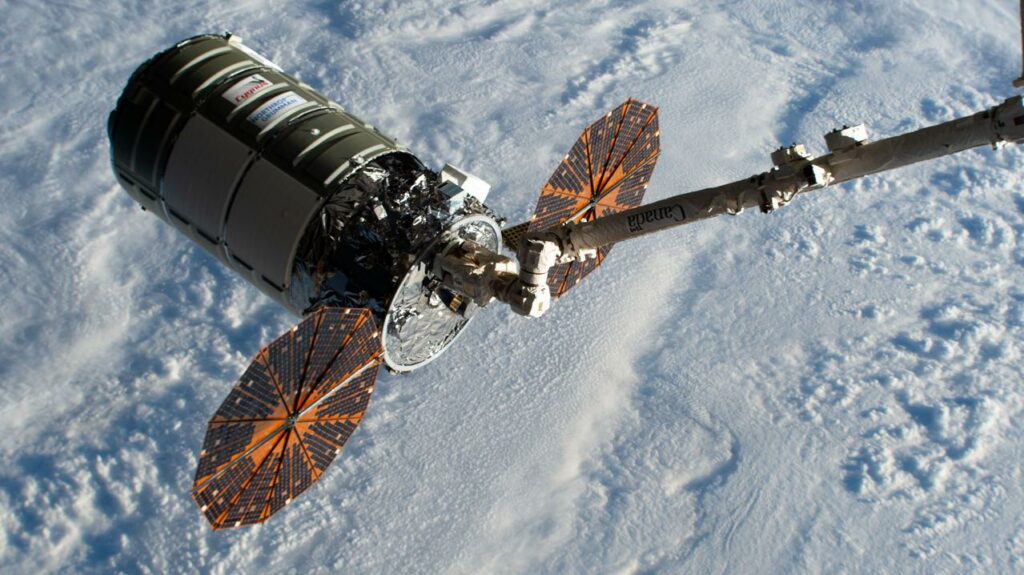
On February 19, Northrop Grumman launched the Cygnus NG-17 mission from the Mid-Atlantic Regional Spaceport with 3,800 kilograms of supplies for the International Space Station (ISS).
The supplies were split into 1,352 kilograms of crew supplies, 1,300 kilograms of vehicle hardware, 896 kilograms of science, 60 kilograms of spacewalk equipment, and 35 kilograms of computers.
One of the experiments going up on NG-17 is a solid-state lithium-ion battery made by the Japan Aerospace Exploration Agency. Currently, most lithium-ion batteries use flammable electrolytes which can break down and become less effective. Solid-state lithium-ion batteries are safe for spaceflight because they don’t leak or break down and are flame retardant.
Another experiment on NG-17 brings a new design of hydrogen sensor for the oxygen generation system in the station’s life support. The oxygen generation system generates hydrogen as a byproduct of a chemical reaction, and it is dumped into space, but it could leak into the crew areas, so hydrogen sensors are used to detect leaks. The current hydrogen sensors are sensitive to vibration and drift, or a gradual loss of accuracy, so they are changed every 201 days. Longer duration space flights don’t have enough space for lots of spare parts, so the new oxygen sensor is more stable and durable so fewer replacements are needed.
The Cygnus also brings up a new electronics box which will be installed on an upcoming spacewalk to manage the power from the new solar panels and a trash bag deployer for the Nanoracks airlock. Later this spring, the ISS will get more capability to yeet garbage into space. Currently, trash is disposed of by packing it into resupply spacecraft which burn up in the atmosphere, but those are limited in capacity and only come a few times a year.
The Cygnus will perform an operational re-boost of the ISS during its mission, adding about half a meter of delta-v to the 500-ton station.
Cygnus uses a Ukrainian-built first stage with Russian-built engines. These may be impacted by Russia’s ongoing invasion, but Northrop Grumman has hardware on hand for two missions, which gives them until mid-2023 to find another rocket.
SpaceX also launched over our break, with Yet More Batches Of Starlinks on February 21 and 25, with one Falcon 9 booster on its eleventh flight and the other on its fourth, sending a total of 96 Starlink spacecraft into orbit from Florida and California. Both boosters landed on their respective barges, to be reused.
There were also two Chinese launches within hours of each other this past weekend, February 26 and 27. One of them was the first flight of a new rocket, a Long March 8 without side boosters from Wenchang. It put 22 small spacecraft into orbit. The other Chinese launch was yet another Long March 4B from Jiquan with a radar satellite called L-SAR 02. We covered the launch of L-SAR 01 in late January of this year.
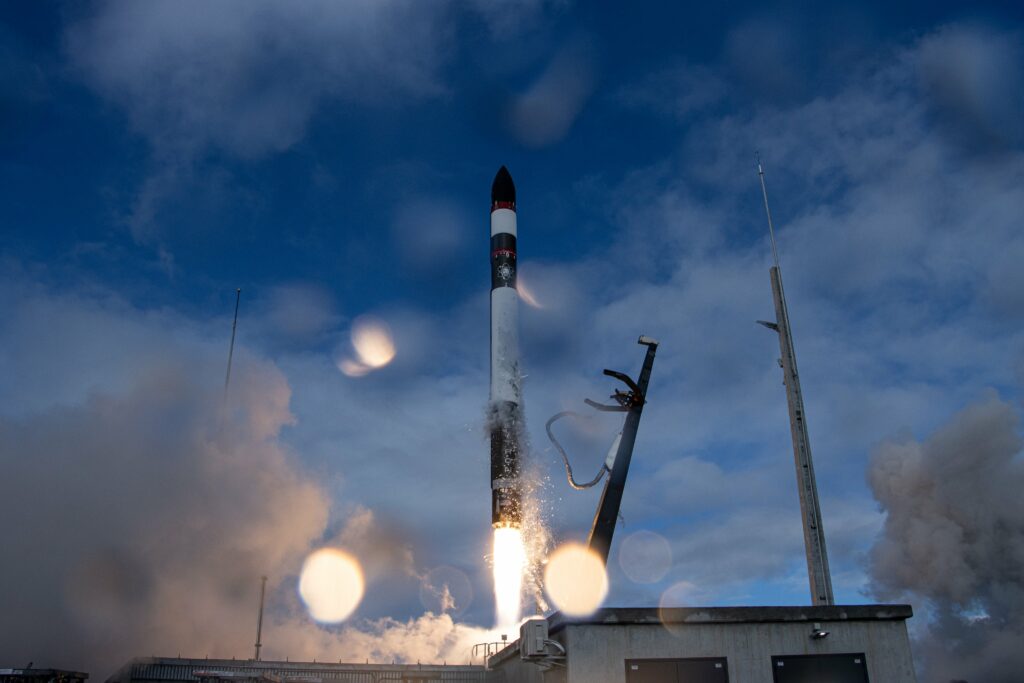
On February 28, Rocket Lab conducted their first launch in 2022 with an Electron from their newest launchpad at their launch complex in Mahia, New Zealand, LP-1B. Called The Owls Night Continues, it successfully put its payload of a commercial radar satellite for Synspective into orbit about an hour after launch. No first-stage recovery was attempted, but the rocket did sport red stripes because it was testing new systems for recovery. Specifically, the second stage had lighter-weight batteries to offset mass gains on the first stage from the added recovery hardware.
To wrap up our rocket summary, NASA awarded SpaceX three more Crew Dragon missions to send NASA astronauts to the ISS and back, extending their services through mid-2028. This will give SpaceX the first nine operational commercial crew rotation missions instead of alternating with Boeing’s Starliner, as was the original plan.
In news about the Russian invasion of Ukraine, SpaceX sent a load of Starlink terminals to Ukraine after a request from the Ukrainian government. The terminals and the service will be provided for free, confirmed by the Ukrainians. The dishes arrived in the country this weekend. This sounds good, right? Maybe not.
Broadband dishes like the Starlink receivers emit in all directions, so it’s easy to geolocate the position of the receivers on the ground and send a guided missile in its direction. Russia can and has done this in the past. Starlink dishes also emit infrared radiation, which also makes them a target; however, small dishes like this aren’t likely to be a major military target.
Also, the closest teleports – the infrastructure that connects the Starlink terminal to the wider internet – are located in Poland which makes them less useful for connections in eastern Ukraine. We’ll have a full show on the impact on spaceflight from Russia’s invasion later this week, so stay tuned.
This has been the Daily Space.
You can find more information on all our stories, including images, at DailySpace.org. As always, we’re here thanks to the donations of people like you. If you like our content, please consider joining our Patreon at Patreon.com/CosmoQuestX.
Credits
Written by Pamela Gay, Beth Johnson, and Erik Madaus
Hosted by Pamela Gay, Beth Johnson, and Erik Madaus
Audio and Video Editing by Ally Pelphrey
Content Editing by Beth Johnson
Intro and Outro music by Kevin MacLeod, https://incompetech.com/music/


 We record most shows live, on Twitch. Follow us today to get alerts when we go live.
We record most shows live, on Twitch. Follow us today to get alerts when we go live.